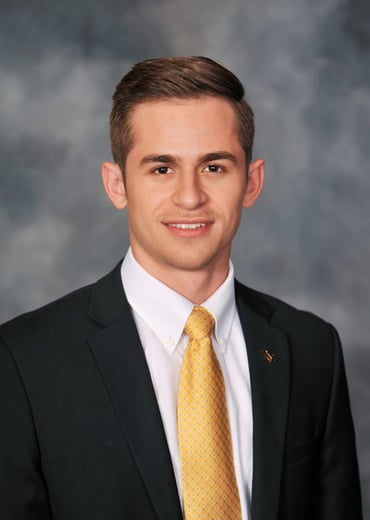PLTW Alumnus Spotlight: Abdallah Shishani
For nearly 25 years, PLTW has offered transformative classroom and learning experiences for PreK-12 students. Now, many of those students are professionals in STEM fields. We recently reached out to several PLTW alumni to learn more about their educational and career journeys and find out what advice they have for current PLTW students. If you are a PLTW alumnus interested in sharing your story, we’d love to hear from you here.
Abdallah Shishani lives in Palmdale, California, and works as an Aeronautical Engineer for Lockheed Martin Aeronautics. In middle school, he completed PLTW Gateway units and in high school, he completed Introduction to Engineering Design course in the PLTW Engineering pathway.
In what grades did you participate in PLTW? What were some of your most memorable experiences from PLTW?
I participated in PLTW courses in 8th through 10th grade. I have an older sister that was able to participate in the PLTW Gateway program a year before me. I remember being very eager to participate in PLTW Gateway the following year after seeing all the different activities she got to complete. My most memorable experience in PLTW was the hands-on, activity-based learning approach, which was often fun and exciting, and always sparked our curiosity to learn. There was very little lecturing and instead, the instructor guided us through our own learning. Something else I look back on often is taking a career quiz in one of the early PLTW courses to see what profession was best suited for me. My best match was aerospace engineering, which is the field I’m in today. From a very early age, I was always interested in the aviation and aerospace field, but PLTW acted as a catalyst and introduction into how I can turn my interests into a career.
What did your journey look like to get to where you are today?
Shortly before the end of my junior year of high school, I got a letter saying I was eligible to apply for our school district’s engineering internship program due to my participation in PLTW. After an application and interview process, I was accepted into the program and selected to interview with Lockheed Martin for their inaugural class of high school interns. This interview ultimately set me up for an internship through my senior year of high school and several summer internships throughout college at Lockheed Martin with groups including the F-35 wing subsystems design, service life analysis, and control surfaces and edges design. I often think back to my participation in PLTW and that letter, and how those two things had such a profound impact on my career at such a young age.
After high school, I attended The University of Texas at Arlington and graduated with a Bachelor of Science in mechanical engineering. Throughout my undergraduate career, I participated in various organizations to develop my leadership skills and interests outside the classroom, including the American Institute of Aeronautics and Astronautics (AIAA) and Kappa Sigma fraternity.
After graduation, I accepted a position with Lockheed Martin on the F-35 control surfaces and edges design group in Southern California. I have really enjoyed moving to California for this new role. I’m surrounded by several beaches, mountains, and national parks, so there’s always something to do.
What is your current role within your company? What are your responsibilities in this position?
I’m a structures design engineer on the F-35 control surfaces and edges design group. I predominately use CAD, composite simulation, and product lifecycle management software to revise or design aircraft parts using composite and metallic materials. In addition to design, we also support our production line by providing root-cause and corrective-action analysis to help reduce or eliminate manufacturing quality escapes.
We are also working on a sustainment effort and developing structural repairs for our parts to improve the mission-capable rates of our aircraft so that our armed forces spend less time maintaining aircraft, and more time carrying out their missions.
What did you learn in PLTW that still helps you today?
The curiosity to ask questions. This was encouraged throughout my PLTW experience and has proved to be beneficial to this day. Designing and manufacturing 5th generation fighter jets is not an easy task. It’s the culmination of the knowledge and labor of thousands of skilled engineers and technicians. There is so much to learn at work or school every day from so many different people and it all starts with asking a question. I gained most of the skills and knowledge I use today thanks to the many hours I spent desk-side with a coworker’s asking questions and learning.
Do you have any advice for current PLTW students?
This goes back to what I said before – ask questions. There’s so much to learn from so many different people – whether it be teachers, coworkers, or professors – you’ll be surprised how eager most people are to share their knowledge.
As important as technical knowledge is in the STEM field, I think those non-technical skills such as communication, leadership, or public speaking are commensurate to being a well-rounded individual. Get involved on your campus, go outside your comfort zone, say “yes” to being a beginner at something new. It’s surprising how those skills help you in your education and career.


